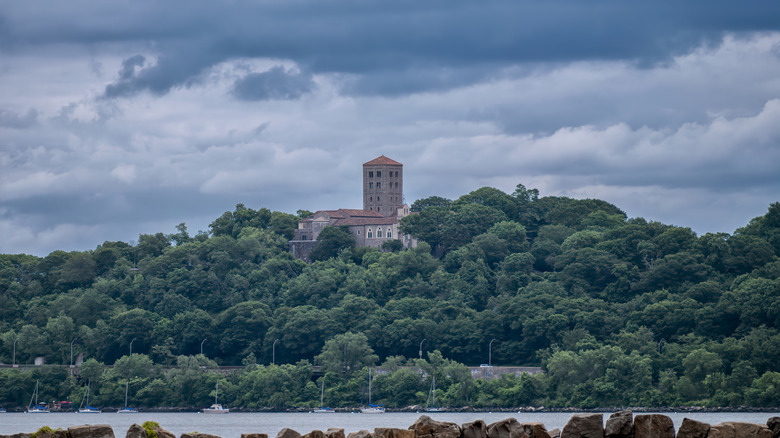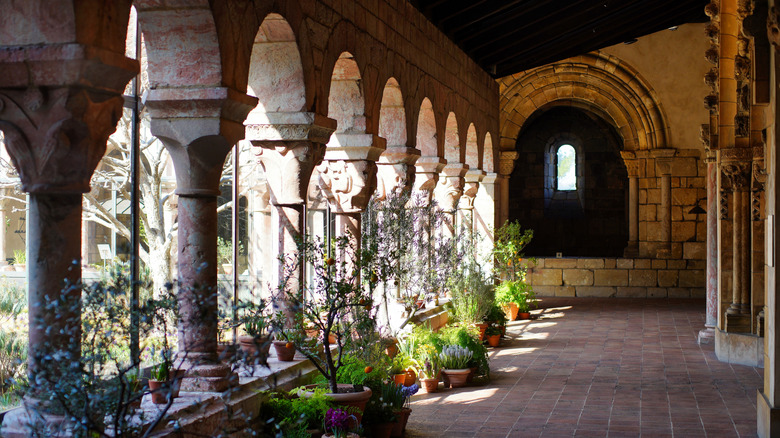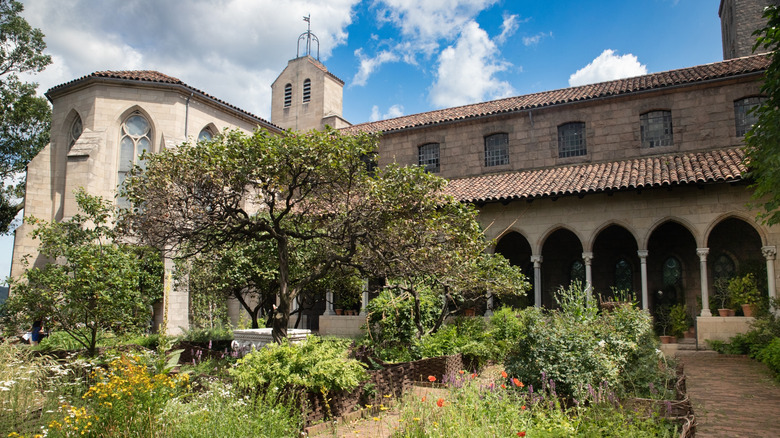One Of New York City's Best-Kept Secrets Is A Hilltop Haven Where Medieval Charm Meets River Views
At the very top of Manhattan in Fort Tryon Park is one of New York City's best-kept secrets. Among the modern architecture of the city skyline is a building that could have been lifted out of any medieval European city. A branch of the Metropolitan Museum of Art, The Met Cloisters is a museum and garden dedicated to the art and architecture of the Middle Ages. From the museum and several points in Fort Tryon Park, if you stay to explore it, you'll also have clear, beautiful hilltop views of the Hudson River and Palisades. In the fall, this is a great place to take in the fall foliage from afar, and a relaxing way to get a waterfront view without battling crowds for a rooftop reservation.
Getting to The Met Cloisters is quite easy, despite it being off the beaten path. Conveniently located off both the 1 and A trains, this spot is easily accessible by subway or bus, two of the cheapest ways to navigate New York City. However, the museum also has parking if you're traveling from outside the city. Free parking is available in two different parts of the park, in addition to public street parking. And afterwards, you can continue exploring New York's museums and even avoid the crowds at some of the more underrated ones.
The Met Cloisters is a modern building with medieval inspirations
Built in 1938, The Met Cloister's architects were inspired by the art the museum would house, wanting the space to reflect the time as much as the collections did, and modeled it on European architecture that has been standing for centuries (like that in the architectural paradise that is France's best medieval town) by incorporating elements from monasteries, churches, and castles to create this unique site. In fact, the namesake of the museum, a cloister, is a series of covered walkways that surround a courtyard or garden. These types of structures are typically seen in monasteries, convents, and — for most modern folks — in transitional scenes in "Harry Potter." According to The Met, when this museum site first opened, John D. Rockefeller said of it, "If those who come under the influence of this place go out to face life with a new courage and restored faith ... those who have builded here will not have built in vain."
America's only museum to solely house art from the Middle Ages, not only is the building itself a look back at that time period, but from room to room, you'll only find paintings, sculptures, and statues from the medieval period. Some of the most famous include The Unicorn in Captivity (the most recognizable of the Unicorn Tapestries), the Bust of the Virgin, and the Cloisters Cross.
Take a long walk through The Cloister gardens
Apart from the breathtaking architecture of the museum itself, The Met Cloisters is famous for its gardens, which contain their own living, ever-changing collection of art. The garden here changes with the seasons, so there's something different to see if you choose to visit year-round. Just like the gardens that would've been present in a medieval church or castle, at The Cloisters you can step outside and get some fresh air, go for a walk, and take in the natural beauty of the space without leaving the building.
The Met Cloisters has three unique gardens. The Judy Black Garden in the Cuxa Cloister is the largest of the three, where you'll find both European plant varieties from the medieval era and modern plants from Asia and the Americas. In the Bonnefont Cloister Herb Garden, you'll find a more specialized selection of herbs and plant varieties, with the rotation based on a list of 400 plants known to be grown during the Middle Ages. The plants in this cloister are organized by function. Lastly, there's the Trie Cloister Garden, which is the most idyllic version of a European garden. If you're looking for an abundance of flowers, this is a great garden to spend some time in during your visit. You can also take the in view of the Hudson River and its surrounding hills from the West Terrace.


